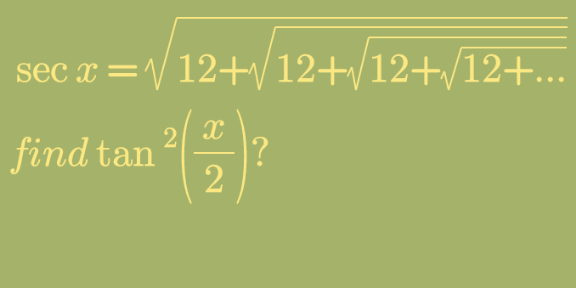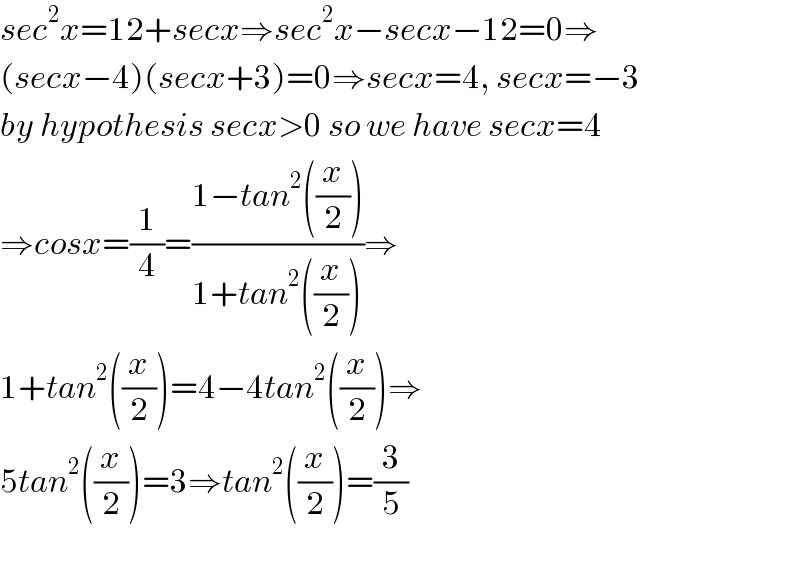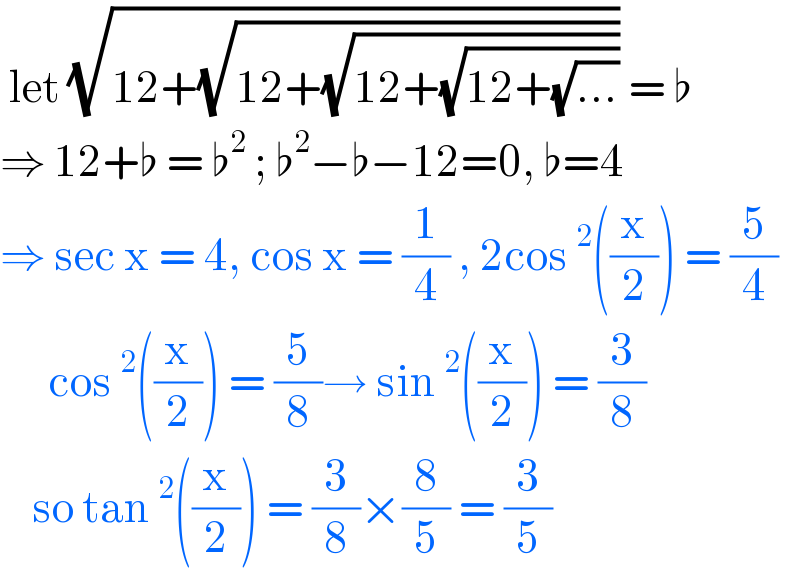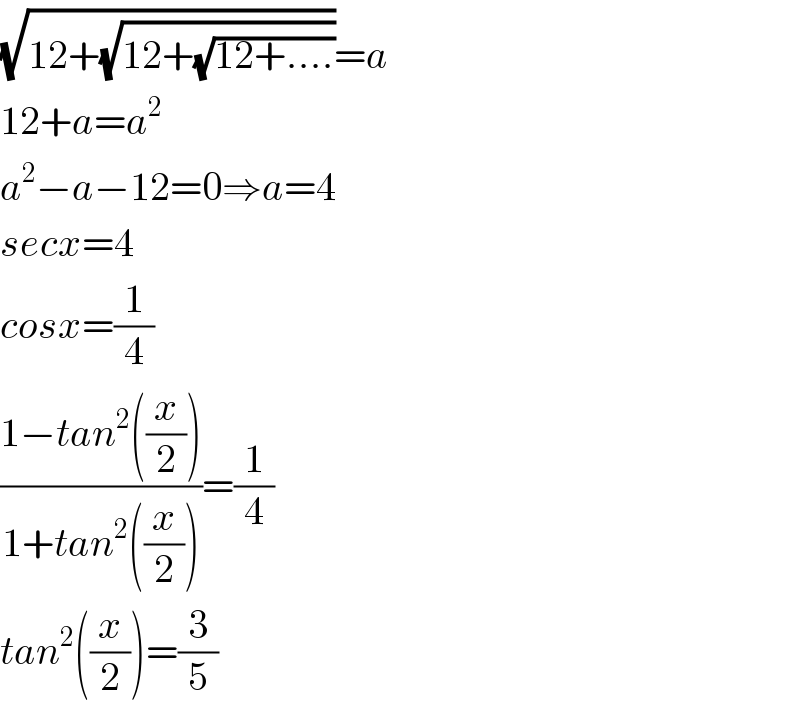
Question and Answers Forum
Question Number 111382 by john santu last updated on 03/Sep/20

Commented by kaivan.ahmadi last updated on 03/Sep/20

Answered by bobhans last updated on 03/Sep/20

Commented by peter frank last updated on 03/Sep/20

Answered by Dwaipayan Shikari last updated on 03/Sep/20

